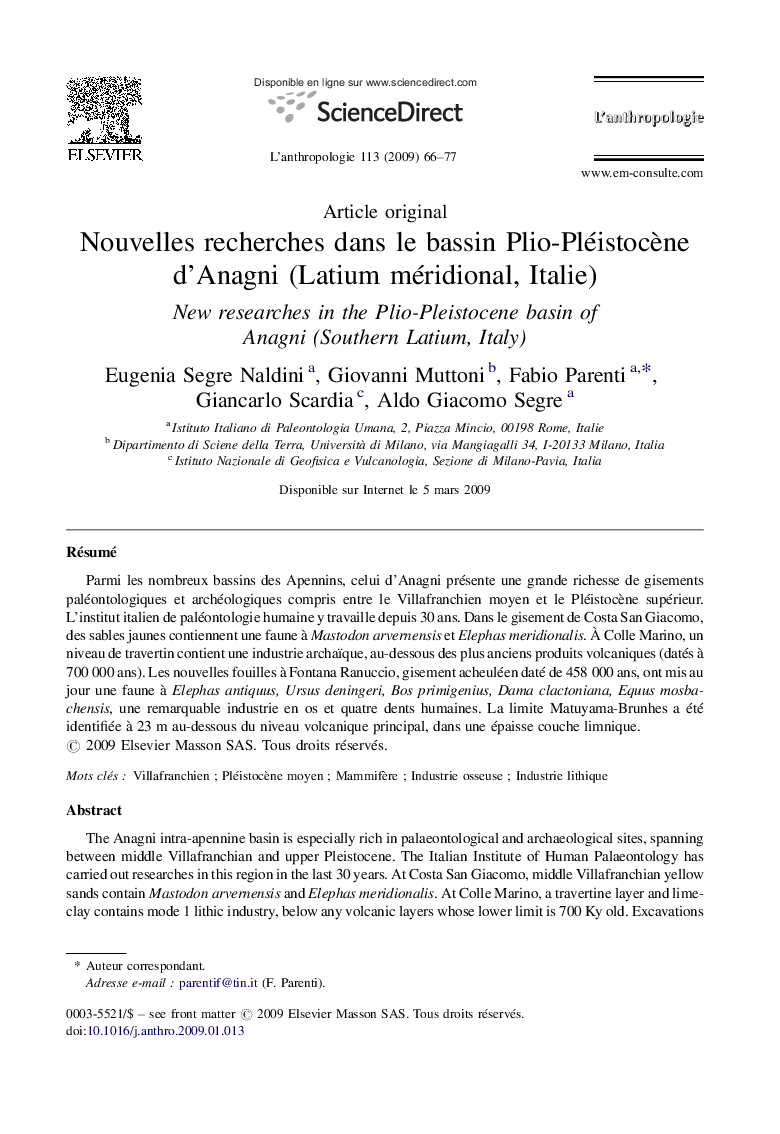| Article ID | Journal | Published Year | Pages | File Type |
|---|---|---|---|---|
| 1033911 | L'Anthropologie | 2009 | 12 Pages |
RésuméParmi les nombreux bassins des Apennins, celui d’Anagni présente une grande richesse de gisements paléontologiques et archéologiques compris entre le Villafranchien moyen et le Pléistocène supérieur. L’institut italien de paléontologie humaine y travaille depuis 30 ans. Dans le gisement de Costa San Giacomo, des sables jaunes contiennent une faune àMastodon arvernensis et Elephas meridionalis. À Colle Marino, un niveau de travertin contient une industrie archaïque, au-dessous des plus anciens produits volcaniques (datés à 700 000 ans). Les nouvelles fouilles à Fontana Ranuccio, gisement acheuléen daté de 458 000 ans, ont mis au jour une faune àElephas antiquus, Ursus deningeri, Bos primigenius, Dama clactoniana, Equus mosbachensis, une remarquable industrie en os et quatre dents humaines. La limite Matuyama-Brunhes a été identifiée à 23 m au-dessous du niveau volcanique principal, dans une épaisse couche limnique.
The Anagni intra-apennine basin is especially rich in palaeontological and archaeological sites, spanning between middle Villafranchian and upper Pleistocene. The Italian Institute of Human Palaeontology has carried out researches in this region in the last 30 years. At Costa San Giacomo, middle Villafranchian yellow sands contain Mastodon arvernensis and Elephas meridionalis. At Colle Marino, a travertine layer and lime-clay contains mode 1 lithic industry, below any volcanic layers whose lower limit is 700 Ky old. Excavations have been restarted at Fontana Ranuccio, a 458 Ky Acheulian site with rich mammalian fauna (Elephas antiquus, Ursus deningeri, Bos primigenius, Dama clactoniana, Equus mosbachensis), a remarkable bone industry and four human teeth. Drillings, for about 40 m, have identified Matuyama-Brunhes limit 23 m under the main volcanic pyroclastite, in a thick limnic clay layer.
